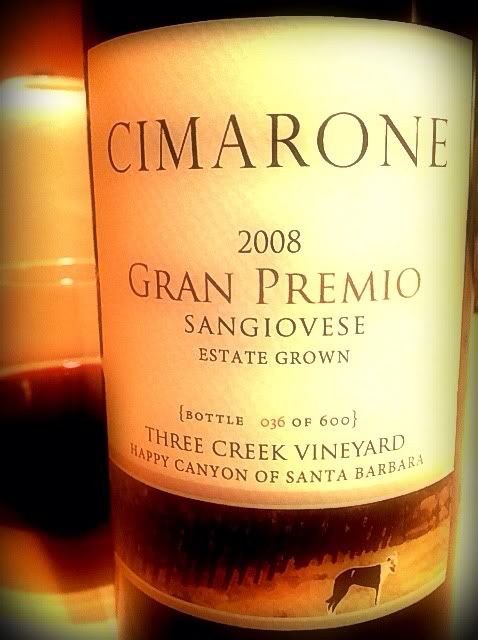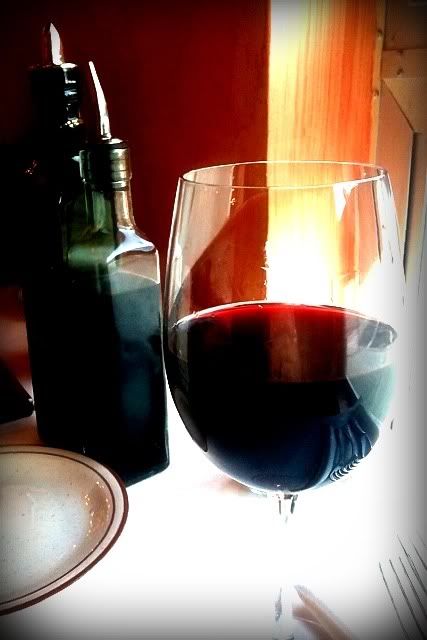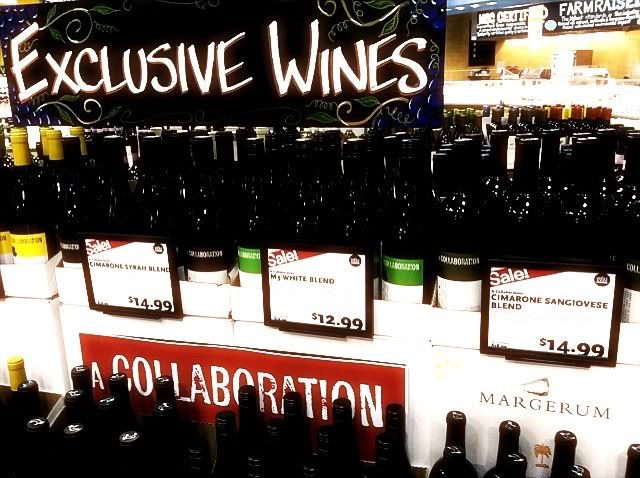The Chianti tasting event, staged in April 2013 by the
Consorzio Vino Chianti, was a nice event, really nice. Nice people, nice wine - really great wine, actually - and a nice, fancy Beverly Hills locale to call my home base for a couple of hours.
Forty Tuscan wineries pouring their best juice in a swanky hotel is not a sucky way to spend an afternoon. It was just the good stuff. There were no squatty bottles swaddled in straw baskets, waiting to be emptied out and covered in candle wax by a sorority sister. Everything was nice. Except that I now have to write about Italian wine. It's not, unfortunately, my strong suit.
I love drinking Italian wine - I even love tasting it at events where I spit out every sip I take. Understanding the intricacies of Italian wine classification, however - and boiling it down to a clearly digestible morsel - is the stuff from which migraine headaches are made.
The Chianti region is a good representation of the state of Italian wine classification. I see a listing of the subregions of Chianti and it makes my head spin to read it. The thought of actually trying to disseminate that information literally chips away at my will to live, and I’d really like to make it through the night.
Geography, history
Briefly, the eight subregions of Chianti are Colli Fiorentini, Chianti Rufina, Chianti Classico, Colli Aretini, Colline Pisane, Montespertoli, Montalbano and Colli Senesi, which is the largest of the sub-zones and includes the Brunello di Montalcino and Vino Nobile di Montepulciano areas, just to throw a little curve into the mix. By the way, there are peripheral areas not included in the subregions, and the wine made from those regions is simply called “Chianti.” This is usually about where the road starts to blur for me.
Chianti has certainly been through a lot of changes. The wine of Chianti was a white wine in the 14th century. Some 400 years later the blend was dominated by a red grape called Canaiolo, with Sangiovese and Malvasia playing second and third fiddles, respectively. An 18th-century Italian statesman came up with a Sangiovese-based version of Chianti, and it was adopted by the Italian government. Now, Chianti must contain at least 80% Sangiovese and is sometimes allowed as a 100% varietal wine.
Many of the small producers at this Chianti tasting event are looking for distributors. After tasting their wines, I can't hide my surprise that they aren't already represented. Importers should check the list below for undiscovered delights.
The Best Table
The highlight of the event was the table occupied by Campo del Monde.
Stefano Mantellini poured me through four wines, each better than the previous one. His
Chianti 2008 and
Chianti Riserva 2008 are both blends of Sangiovese and Cabernet Sauvignon. The former spent three months in oak, while the Riserva saw ten months in wood barrels. His
Chianti Superiore 2007 is made up of Sangiovese, Canaiolo and Abrusco grapes which are organically farmed. The nose on this wine is very intense - almost Port-like - and has wonderful acidity and a tart finish. The
Chianti Riserva "Ruschieto" 2006 is all Sangiovese and is aged in steel tanks. The savory flavor is a knockout and the acidity is made for food pairing.
I thought that a Riserva Chianti had to be aged in wood, but Mantellini told me it's the Chianti Classico region which has that restriction placed upon it. Chianti does not, and he takes full advantage of that loophole with his "Ruschieto."
Vin Santo
After he poured me through his list, he waved his hand over a bottle with a wax seal on it and told me to come back later and make it my last wine. I did. It was a Vin Santo aged for seven years, a wine his family has made for decades. Mantellini carefully scraped the wax seal away from the Port-style bottle, wiped the cork, opened it and ceremoniously poured a delight. The nut-brown wine made of dried grapes smells of raisins and caramel and offers notes of coffee and toffee on the palate. Another taster beside me could only utter, "God," as he walked away. It is a heavenly sip.
Another exceptional Vin Santo came from Villa Artemino. It's the color of scotch, with a nose like whiskey and a beautiful, semi-sweet taste.
Characteristics
Certain descriptive words kept appearing in my notes - cherry and smoky came up a lot - but the one I couldn't get away from was "great acidity." Chianti is a Sangiovese-based wine, and that's a particularly good grape for acidity. It's what makes Chianti such a good wine to pair with food.
Many of the producers at this event poured wines which were aged in stainless steel or cement. These wines showed a wonderful freshness and, even though some were rather young, were ready for a prime-time food pairing.
Fattoria Le Sorgenti
Chianti Colli Fiorentini "Respiro" 2011 prompted a "wow" moment for me. Smoke, smoke and more smoke on the nose, with a dark and smoky palate - from a wine aged in steel tanks.
Marco Goracci said his lower-elevation vineyard yields the Sangiovese for this varietal wine.
Fattoria Poggio Capponi poured a
2011 Chianti which is a blend of Sangiovese, Colorino and Canaiolo aged in cement. It's beautifully fresh on the palate.
I would never have guessed the Fattoria Valacchi
Chianti 2011 was aged in steel, not oak, with the smoky red fruit it offers.
Three-to-four year-old wines were the rule, although a couple with some years on them sneaked into the room. The Azienda Agricola Casale di Giglioli
Chianti Riserva 2004 was silky smooth on the palate and aromatic, too. The 2010 is still young, but is well on it's way.
The Castello di Oliveto
Chianti Riserva 2010 has two years in the barrel and shows an incredible savory note on the nose and palate.
La Querce
Chianti "Sorrettole" 2011 puts Merlot in with the Sangiovese and Colorino. It has a smoky black cherry palate in which the supporting grapes really shine.
Here are the wineries which are in need of an importer. They all poured remarkable Chiantis at this event. An importer looking for a rising star may want to dig into this list:
Az. Agr. San Gervasio
As. Agr. Corbucci
Castello di Oliveto
Fattoria di Casalbosco
Fattoria Lavacchio
Fattoria Le Sorgenti
Fattoria Valacchi
Podere Alberese
Soc. Agr. Venatoria Tacinaia
Streda Belvedere
Tenuta Bossi - Marchesi Gondi
Terre di San Gorgone
Villa Travignoli
Follow Randy Fuller on Twitter









